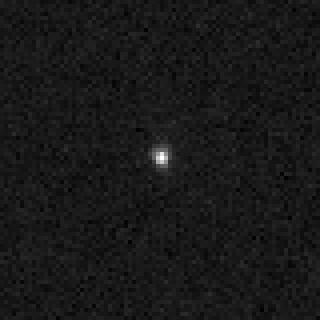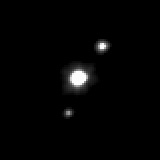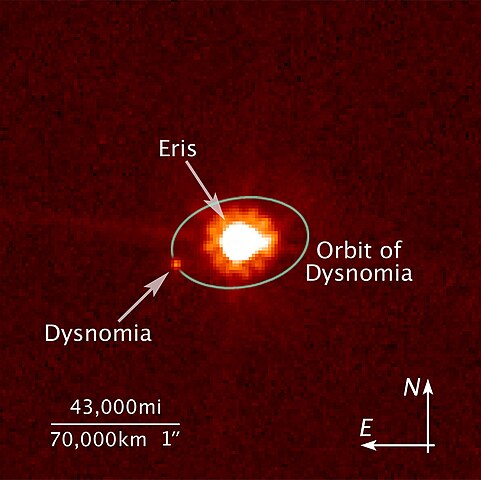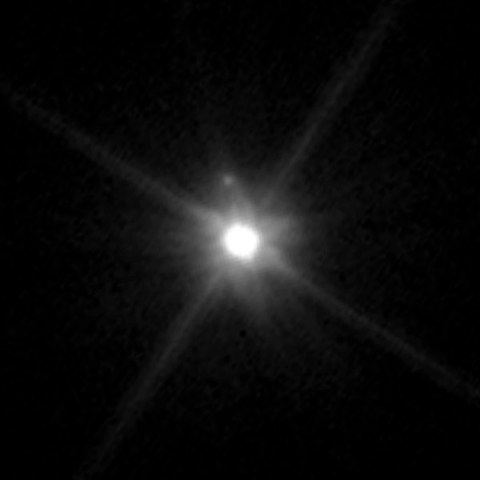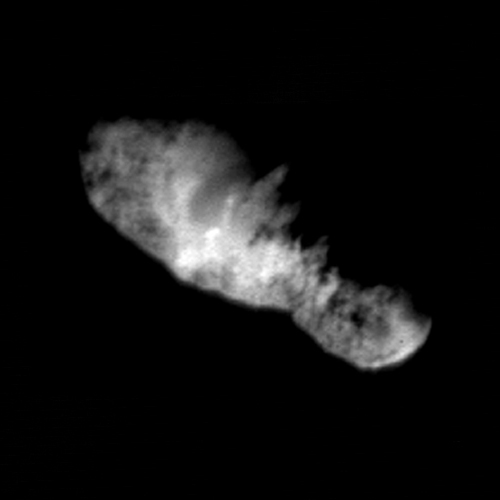1 day / second
0.5 AU
2012 VP113
Dwarf Planet
A distant dwarf planet candidate discovered in 2012 orbiting the Sun at an average distance of 266 AU in a highly eccentric orbit that never brings it closer than 80 AU.
Key Facts
orbital regime | Inner Oort Cloud |
learn more | Wikipedia |
mass | 1.0000e+21 kg |
radius | 287 km |
hill radius | 0.044 AU |
semi-major axis | 271.5 AU |
eccentricity | 0.704 |
inclination | 24.056º |
longitude of the ascending node | 90.787º |
argument of periapsis | 293.8º |
orbital period | 4,473.558 years |
surface gravity | 0.083 g |
class | sednoid |
discovery date | November 5, 2012 |
discovered by | Scott S. Sheppard and Chadwick Trujillo at Cerro Tololo Inter-American Observatory |
name origins | Nicknamed "Biden" after Joe Biden |
dimensions | Approximately 450 kilometers in diameter |
albedo | 0.15 |

